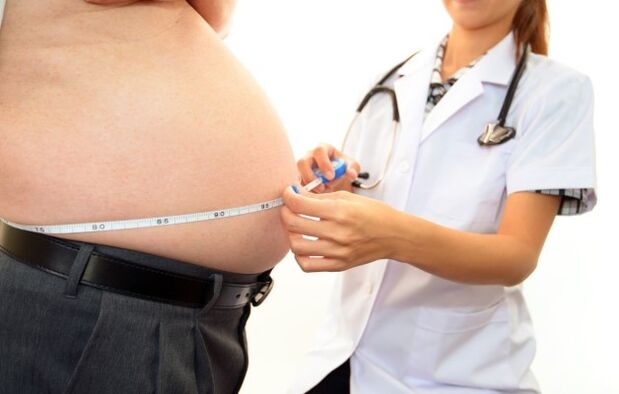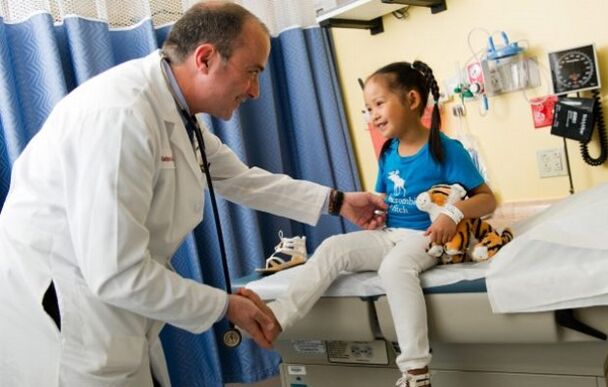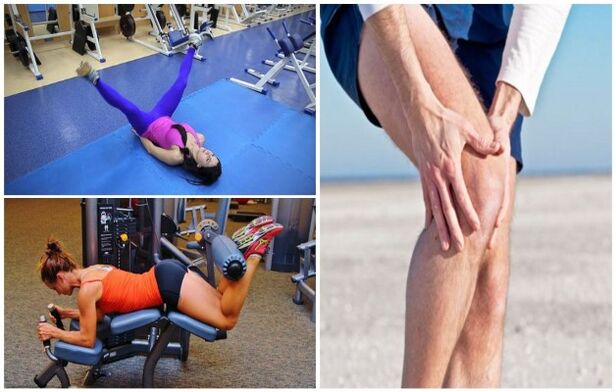Arthrosis of the hip joint is a disease of the musculoskeletal system with a progressive course and a chronic nature. Dystrophic changes begin in the cartilaginous tissue, which changes its structure, becomes loose, fibrous, becomes thinner and loses its compensatory function. As a result, bone joints begin to rub against each other, motor activity disappears, and pain occurs. Without treatment, a person becomes disabled.
Clinical picture and causes of arthrosis
Arthrosis of the hip joint occupies a leading position among diseases of the musculoskeletal system and affects mainly the adult population after 35 years. In the medical classifier, he is given the code M16 according to MBK 10.
The hip joint is the largest in the human body and takes the greatest load. It connects the bones to the pelvis and has a spherical appearance. The round head of the femur is inserted into the acetabular notch. Its surface is covered with cartilage tissue, which allows the bone to glide and perform the function of absorbing shock, protecting the bone from friction, destruction and providing a wide range of motion.
The mechanism of arthrosis is simple:
- The amount of synovial fluid decreases, as a result of which the joints are washed more severely by it, and the supply of nutrients decreases.
- The joint structure becomes loose. Due to friction, the cartilage becomes thinner, it stops reducing the pressure on the bone.
- Growths (osteophytes) form along the edges of the bone site.
- The joint gap is gradually reduced.
- The person is in severe pain, problems with movement, limbs are shortened, causing lameness.
Hip arthrosis can develop for a number of reasons, but more often it is provoked by a combination of adverse conditions. The disease is divided into primary and secondary. In the first case, the doctor does not find a reason for the development of the disease, in the second, arthrosis occurs due to a specific pathology.

Main reason:
- trauma;
- power load, especially in the post -traumatic period, when the joint has not yet recovered;
- overweight;
- congenital anomalies of the femoral head (dysplasia);
- descent;
- arthritis (inflammation of the joints);
- prolonged stress;
- hormonal changes and diseases of the endocrine system;
- contagious disease.

Arthrosis can be unilateral, with damage to the right or left hip joint. More often there is a two-sided option, when the pathological process affects both sides.
Symptoms and stages of arthrosis
The clinic of arthrosis directly depends on the stage of the disease. At first, a person begins to feel slight discomfort in the groin and morning stiffness of the legs, while swelling and puffiness of the soft tissues do not occur. As the pathology progresses, the acute period begins, which is characterized by intense pain.
On a note. When the first symptoms are discovered, you must see a doctor and undergo an examination. Early illness responds well to treatment.
The main complaints of all patients were pain and limited movement. Their severity depends on dystrophic changes in the cartilage.
There are 3 degrees of disease:
- At 1 degree, only discomfort arises after prolonged physical exertion (hill climbing, running, cycling), which disappears on its own after rest. Muscles in good condition, unlimited movement. Narrowing of the joint space can be seen on x-ray.
- At 2 degrees, the pain begins, which is given to the groin area, spreading to the buttocks and front of the thighs. There is a pain "starts" when trying to get up or start walking, which disappears after 2-3 minutes. After prolonged exercise, the pain increases and disappears during rest. Symptoms of arthrosis are characteristic spasms in the joints, limited movement (hip abduction), decreased muscle strength, with a painful sensation, smooth muscle spasms occur. On X-rays, small osteophytes are visible, located along the edges of the joint bone area. The femoral neck thickens and widens, the joint space narrows markedly.
- At 3 degrees of the disease, the pain is permanent and does not subside even at rest. While walking, the patient uses artificial objects (crutches, crutches). There is atrophy of the muscle tissue of the thighs and lower legs, the limbs are shortened - to reach the ground, the patient is forced to stand on fingertips. X-ray images show large osteophytes, femoral head flattened, joint space practically invisible.
Some doctors also distinguish the 4th stage of the disease. Ossification of joint deformities and complete occurs on it, a person can not move without the help of a cane. The degree of arthrosis is established based on X-ray images, which help clarify the etiology of the pathological process.
The following types of arthrosis are distinguished:
- dysplastic - the slope of the acetabulum is determined;
- post -traumatic - depending on the nature of the injury and the shape of the joint after bone fusion.
Pediatric arthrosis
Pathological causes in children are trauma, subluxation and dysplasia. Metabolic disorders can trigger the destruction of cartilage tissue.
The main symptom of the disease in children is pain syndrome after a long game. As arthrosis progresses, they become more intense and stronger. The child refused to run, his appetite decreased, excessive tears appeared. The second symptom is limited movement in the affected joint, numbness of the foot. Parents need to pay attention to feature problems. If the first symptoms are found, an urgent need to see a doctor.
On a note. Children's bodies regenerate faster than adults. Timely treatment will save the child from disability.
If the diagnosis is confirmed, the main goal is to improve the blood supply to the joints. For this, doctors prescribe various physiotherapy procedures, exercise therapy, visits to sanatoriums, medications.

Prevention consists of proper nutrition. Especially important are vitamins of groups B, C, D. It is necessary to walk a lot in the fresh air, move actively and avoid traumatic situations.
The difference between arthrosis and other joint diseases
Many patients, after hearing the diagnosis of "arthrosis", confuse it with other diseases of the joints. Often doctors in medical history make a note of "coxarthrosis". Consonant words confuse the patient.
Arthrosis is the common name for a pathological process that causes the destruction of cartilage tissue. It usually disappears with a joint deformity without infectious and inflammatory processes. May affect knees, elbows, shoulders and other joints. Coxarthrosis is an arthrosis of the hip joint, as indicated by the prefix "cox", which highlights a specific area.
What is the difference between sacroiliitis and arthrosis? In the first case, inflammation of the sacroiliac joint occurs, which is characterized by pain in the sacrum when sitting. There is swelling of the vertebrae, pain in the back. With arthrosis, a thinning of the cartilage occurs, as a result of which bone friction begins - this causes pain.
Arthritis is an inflammatory process in the joint tissues. The difference with arthrosis is that the latter is caused by mechanical movements that lead to cartilage abrasions. With arthritis, swelling and redness occur in the articular area, the cause is an infectious disease or inflammatory process in the body. The reactive stage of the disease almost always leads to arthrosis. The sensation of pain is similar, but with coxarthrosis they subside at night, and with arthritis they become stronger.
The clinical picture is similar. To properly diagnose and rule out arthritis and sacroiliitis, doctors perform blood sampling and analysis. Increased leukocyte content and ESR indicate an inflammatory process in the body.
Diet
With arthrosis, long-term and complex treatment is necessary, which is based on medications, physiotherapy, exercise therapy and massage, while diet is given an important role. Proper nutrition is needed at the stage of deterioration and in remission. It should be balanced and contain all the essential vitamins. In addition, the diet promotes weight loss, which reduces stress on the joints.
Authorized products:
- vegetables and fruits;
- lean meats;
- porridge crushed on water;
- dairy product;
- bran bread;
- a fish;
- honey;
- mushrooms;
- nuts.
The menu must include gelatin. Based on it, you can make a variety of desserts from berries and fruits, as well as jelly meat. Eat cottage cheese, yogurt, milk every day. It is better to replace chicken eggs with quail eggs. Boil, simmer or steam food. Eliminate fried and fatty foods. Give preference to vegetable oils. Drink at least 1. 5 clean water a day. The temperature of the food should not be too high or too low.

Avoid fast food snacks with sweet soda water. Exclude semi -finished products, sausages, preserves. Prefer natural products without added preservatives.
What is prohibited:
- orange;
- smoked products;
- white bread and baked goods;
- hot spices;
- garlic;
- radish;
- fatty meats;
- Salo;
- canned food;
- mayonnaise;
- dairy products with high fat content;
- carbonated drinks;
- alcohol.
important. Food intake should be frequent, at least 5-6 times a day, 200 grams. Snacks are best made with your favorite fruits, you can drink a glass of kefir in the evening. The diet should not exceed 2000 kcal for women and 3000 kcal for men.

Prophylaxis
Preventive measures consist of timely elimination of the cause of the disease and general strengthening measures.
To prevent the development of the disease, you must adhere to the following rules:
- To lead an active lifestyle. Swimming, exercising without pressure on the joints is recommended. Prevention methods include baths and saunas, which increase blood flow and remove toxins.
- Follow a diet. This is necessary to provide the body with the necessary vitamins and speed up metabolic processes.
- Avoid hypothermia. Low temperatures cause muscle spasms, which affect the blood supply to the joints.
- To minimize the possibility of trauma, especially with the development of coxarthrosis.
Subject to the rules, patient reviews are positive. They noted a decrease in pain, restoration of joint mobility, and an improvement in well -being.

Coxarthrosis or hip arthrosis is a disease with a chronic course, exacerbation and remission phases. Timely treatment allows you to stop dystrophic processes in cartilage tissue and maintain leg mobility. In the absence of therapy, a person becomes disabled, and in this case, only surgery and joint replacement can restore the musculoskeletal system.

























